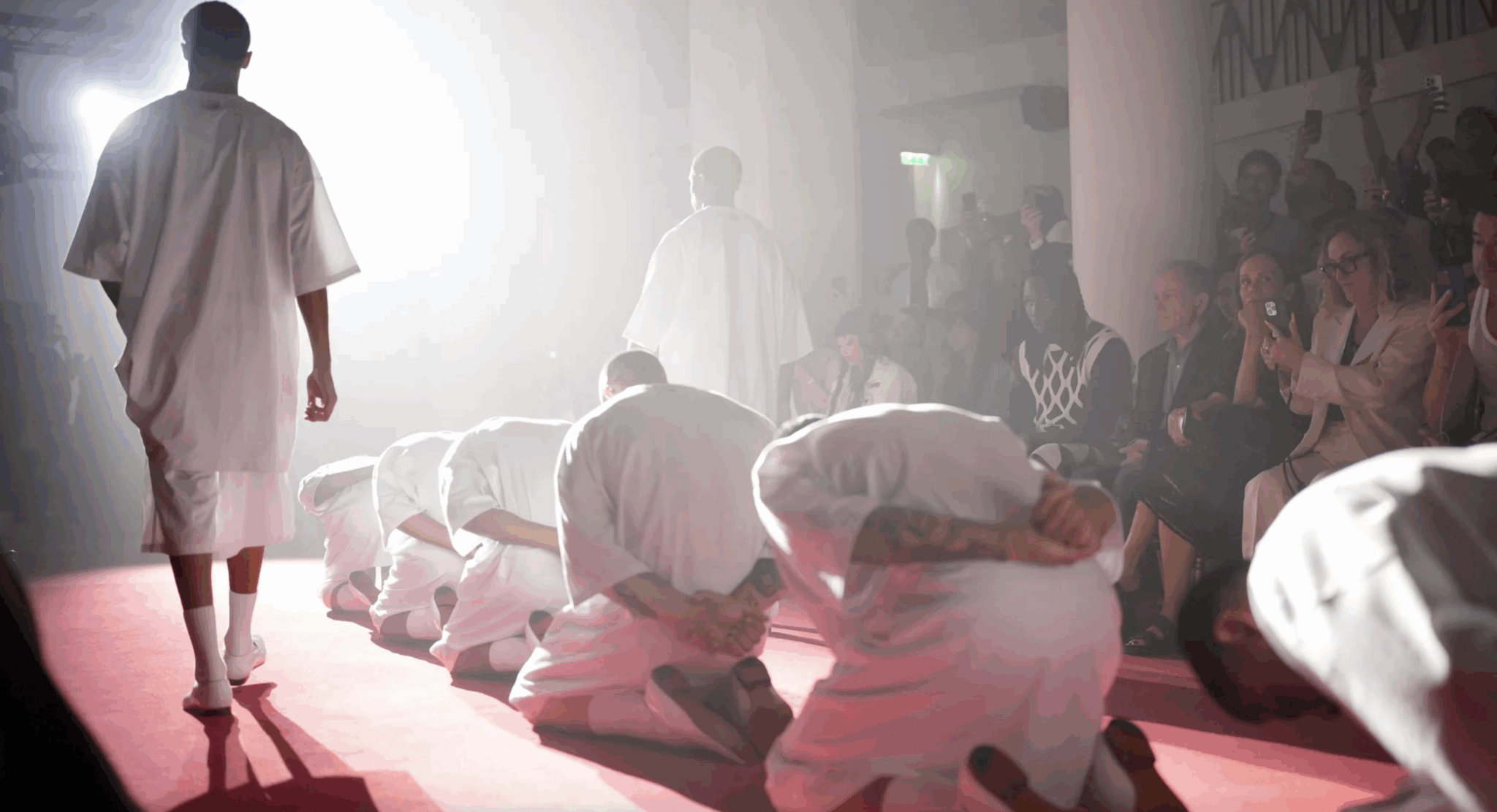Keypoints Summary – ICE at Fashion Week
- Willy Chavarria’s latest show shocked Paris Fashion Week
- Models marched in ICE-inspired looks, sparking global debate
- The theme? Erasure, immigration, and unapologetic identity
- Salvadoran president Nayib Bukele reacted with sarcasm
- Chavarria says it’s about claiming culture and roots
- ICE at Fashion Week stirred emotions and social media fire
- The message? Fashion isn’t just fabric—it’s protest now
- Critics and fans can’t stop talking about this political runway moment
Fashion Week goes dark?!
I watch Fashion Week like people watch sports. It’s my Super Bowl, my World Cup, my Roman Empire. But this season? Willy Chavarria walked out of the tunnel and set the runway on fire. Not with sequins or couture fantasy—but with ICE. Yeah, ICE at Fashion Week. And it hit harder than any trend I’ve seen this year.
You’re sitting there, double-tapping Y2K crop tops and baby-pink nostalgia—when suddenly, boom. Models roll down the catwalk in prison jumpsuits. Tactical vests. Restrained movements. The energy is thick, tense. You feel it in your chest before you even figure it out.
This isn’t just a collection. It’s a message. A protest. A rallying cry dressed in pleated pants and leather. And honestly? It couldn’t have come at a better—or worse—time.
Why ICE at Fashion Week Was More Than a Gimmick
Let’s get this straight. This wasn’t about shock for the sake of it. Willy Chavarria doesn’t do empty noise. The man builds meaning into every stitch. And this time, he didn’t just push boundaries—he burned them down.
The show, titled Safe From Harm, opened with lights dimmed and faces hard. There was no soft entrance. No dreamy vibe. Just reality—raw and unapologetic. A reflection of how many immigrants, especially in America, have felt walking through life.
Immigration and border tension? That’s not new. But showcasing ICE at Fashion Week? That’s bold. That’s saying the unspoken. It’s taking what happens in the shadows and throwing it under the spotlights of Paris.
Some viewers were stunned. Some stood up. Others got mad. But no one ignored it. And that’s the power of good fashion—it doesn’t ask for attention. It demands it.
Chavarria’s Message: Erasure Is Real
In an interview after the show, Chavarria said something that stuck: “We’re in a time of erasure.” Not just of names or borders—but of culture, of language, of history.
And when you think about it, he’s right. How many stories get silenced? How many faces disappear from memory? And how much of our cultural richness gets reduced to a stereotype?
Chavarria brought it all back. With hard silhouettes. With aggressive tailoring. And with models walking like they were defending something—because they were.
Identity.
Dignity.
Existence.
When Fashion Becomes a Political Weapon
We talk about fashion as escapism. The dream, the glitter, the fantasy. But Chavarria flipped it. No escape. Just confrontation.
ICE at Fashion Week wasn’t just visual. It was emotional. You could feel the fear. The resistance. The defiance.
Because for many immigrants, ICE isn’t just a headline. It’s a threat. A memory. A trauma. And now, it’s a garment. A uniform of protest.
This isn’t the first time fashion’s spoken out. But this? This screamed. Loud enough for the president of El Salvador to hear.
Bukele’s Reaction: The Internet Went Wild
After the show went viral, Salvadoran president Nayib Bukele couldn’t help himself. He fired off a sarcastic reply online. “Looks like you miss us,” he wrote. Glib. Detached. A perfect example of the political coldness Chavarria was calling out.
That’s the thing about truth—it makes people uncomfortable. Leaders deflect. Critics get defensive. And the rest of us? We keep watching.
The tension between art and authority is nothing new. But when a fashion show in Paris provokes a head of state thousands of miles away? That’s when you know something real happened.
Claiming Identity in a World That Keeps Stealing It
For first-gen kids, immigrants, or anyone who’s ever felt othered, this show was personal. Because what Chavarria nailed wasn’t just aesthetic—it was emotional accuracy.
That feeling of being visible but invisible. Being watched but not seen. Living under the radar and still being a target.
Every outfit told a story of survival. Of reclaiming culture in a system that tries to erase it.
There were nods to Chicano street style. To prison uniforms. To Sunday best. All of it woven into a fabric of resistance.
He’s not just designing clothes. He’s building armor for the overlooked.
Why Paris Was the Perfect Stage for This Protest
Paris Fashion Week is fashion’s final boss. It’s where elegance lives. It’s where rules are made. And Chavarria marched in like he was rewriting the whole book.
Because that’s what this moment needed. Not subtle rebellion. Not whispered protest. But loud, visual storytelling on the biggest platform in fashion.
Every show is a statement—but this was a statement for the forgotten. And he brought it right into the heart of an industry that still struggles with true diversity.
Will the Industry Listen—or Just Clap and Move On?
That’s the million-dollar question. Will editors and buyers see the pain in this show—or just the beauty? Will they commercialize the rage? And will they water down the message into just another “bold look”?
The fashion world loves a good cause—until it asks for real change.
Chavarria dared to ask anyway. To make it impossible to look away. To say: “This is our pain. This is our pride. And you will see us.”
The challenge is whether anyone will keep seeing after the runway lights go out.
We’ve seen political fashion before. But ICE at Fashion Week isn’t a trend. It’s a reckoning. And honestly? It’s about time.
Edgy or just too much?
Chavarria ripped the fantasy veil off the runway and made people look at what they’d rather ignore. Identity isn’t just about style. It’s about survival.
And in a time when so many voices are being silenced, fashion just got its voice back. Bold. Brazen. Bilingual.
If this is what the future of runway looks like? Count me in. And keep your eyes open. Because this isn’t the end. It’s the beginning.
Ready to talk about it? Share this with someone who needs to hear the message behind the clothes. Let’s make fashion uncomfortable again.





